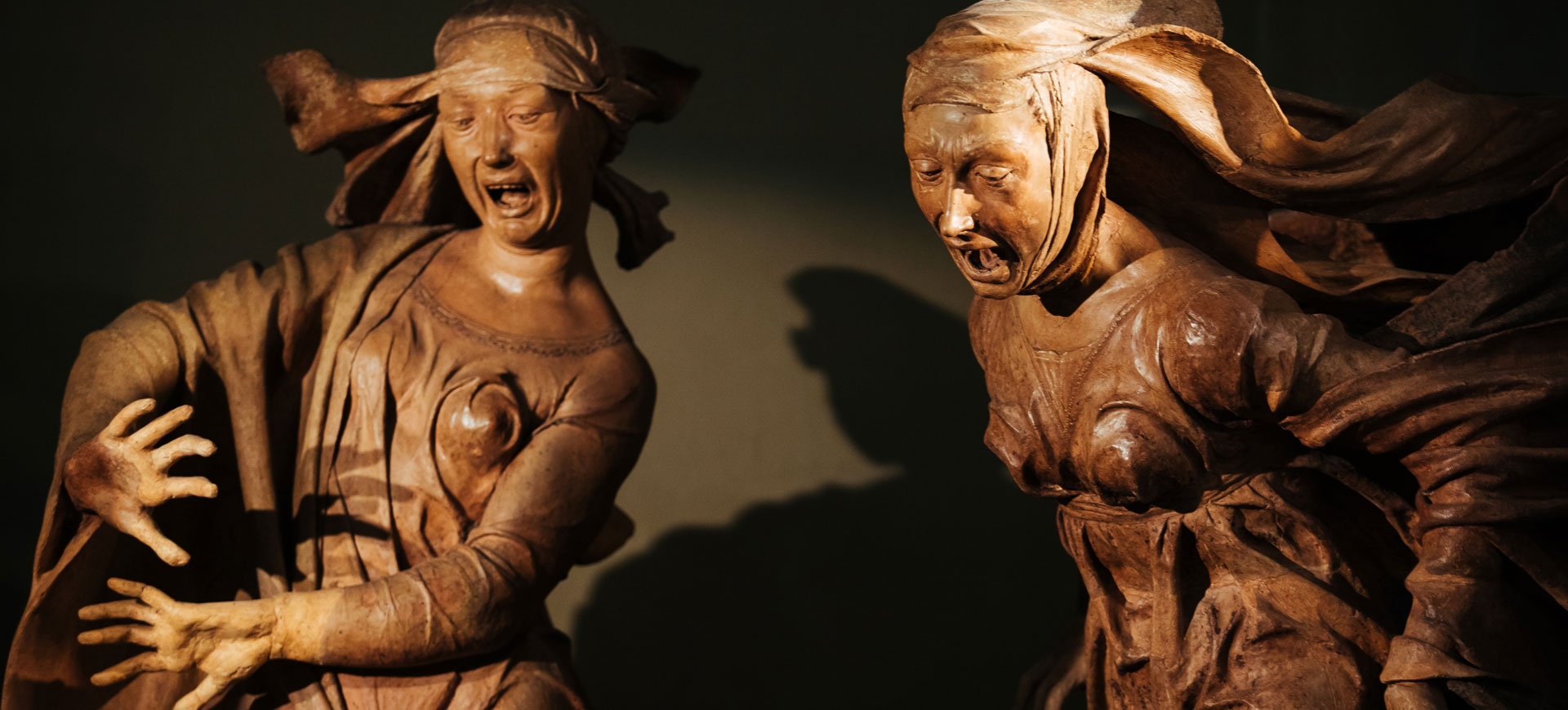
Santa Maria
della Vita
Complesso
Monumentale
Considerato il più importante complesso scultoreo in terracotta di tutto il Rinascimento italiano, il Compianto sul Cristo Morto di Niccolò dall’Arca è una tappa che non può mancare nell’itinerario di ogni viaggiatore in visita a Bologna. Un’opera d’arte di eccezionale potenza espressiva, che nel corso dei secoli ha affascinato studiosi e intellettuali, da Carlo Cesare Malvasia a Francesco Arcangeli a Gabriele D’Annunzio, che qui giunse in visita il 19 settembre del 1906 e fu così suggestionato dall’opera da appuntare sui suoi taccuini alcune riflessioni, con quell’espressione “urlo di pietra” che ancora oggi rappresenta l’immagine più intensa per descriverne l’esasperato realismo e la straordinaria drammaticità compositiva.
Posizionato a lato della cappella a destra dell’altare maggiore della chiesa, il gruppo, la cui data di composizione si colloca tra il 1463 e il 1494, fu commissionato all’artista dalla Confraternita dei Battuti Bianchi fondata due secoli prima e qui stanziatasi per assistere malati e bisognosi: originariamente in terracotta policroma, il Compianto si sviluppa attorno al corpo morto di Cristo, disteso su un feretro rettangolare, corpo sofferente ed emaciato attorno al quale si dispongono le figure a semicerchio, tutte a grandezza naturale.
Ciascuna delle figure partecipa allo straziante dolore in maniera diversa: la Maddalena sembra interrompere la sua corsa verso il Cristo emettendo, pietrificata e incredula, un urlo, mentre la sua veste è sollevata dal vento. Maria di Cleofa si scherma con le mani in un moto di orrore, quasi a rifiutare la morte di Cristo. San Giovanni ammutolito, triste e silenzioso tenta di mantenere una compostezza nel dolore contrapponendosi al pianto disperato della Vergine, madre che ha perso il figlio. Maria Salome cerca di trattenere le lacrime aggrappandosi alle vesti e Giuseppe di Arimatea, inginocchiato vicino alla testa del Cristo, identificato dalle tenaglie e dal martello che regge nelle mani, guarda lo spettatore come a volerlo coinvolgere nella tragedia in atto.
Il Compianto fu la prima opera realizzata a Bologna da Niccolò dall’Arca, originario della Puglia, come è testimoniato dall’incisione “OPUS NICOLAI DE APULIA” sul cuscino che regge la testa del Cristo: la presenza dell’artista in città è documentata a partire dal 1462. Un capolavoro che divenne fin da subito oggetto di culto, sia per il suo significato religioso che per il suo eccezionale valore artistico. Un’opera unica, dall’impressionate potenza espressiva e di grande realismo, nel novero dei più importanti capolavori dell’arte italiana.
"Infuriate dal dolore, dementate dal dolore erano le Marie. Una, presso il capezzale, tendeva la mano aperta come per non vedere il volto amato; e il grido e il singulto le contraevano la bocca, le corrugavano la fronte il mento il collo. Ascoltami. Puoi tu imaginare che cosa sia l'urlo pietrificato?
Puoi tu imaginare nel mezzo della tragedia cristiana l'irruzione dell'Erinni?"
Gabriele D'Annunzio, "Le Faville del Maglio", 1924
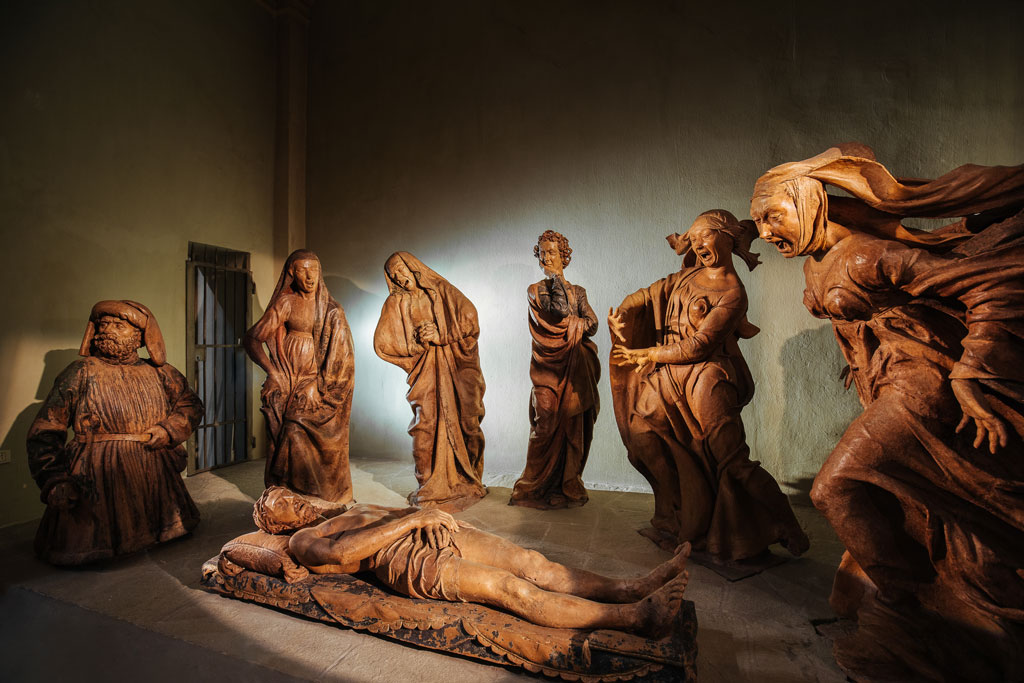
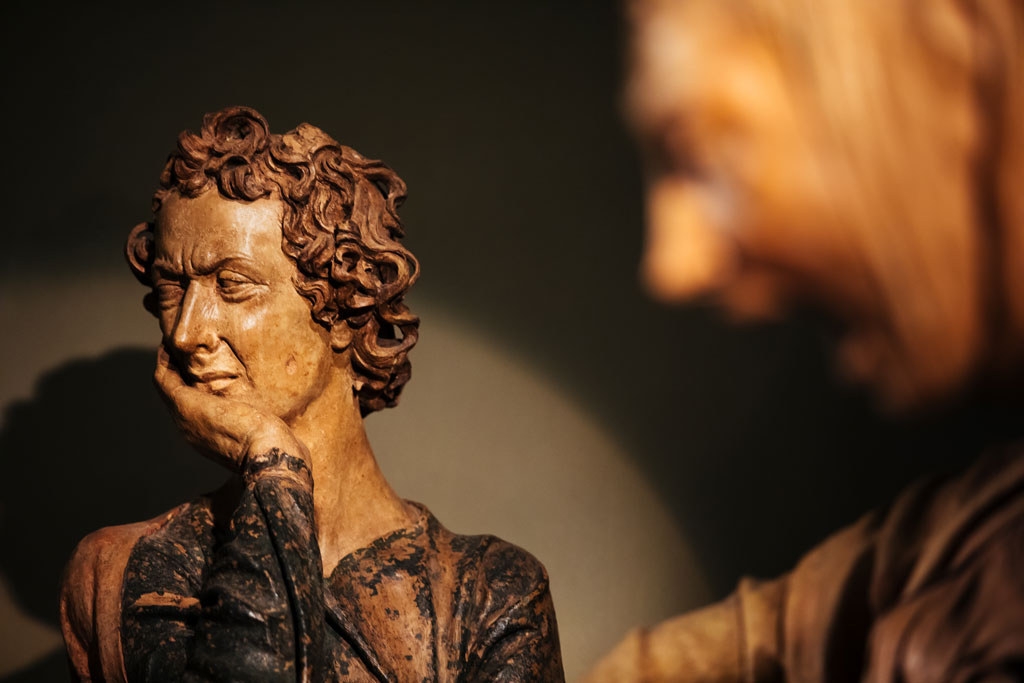
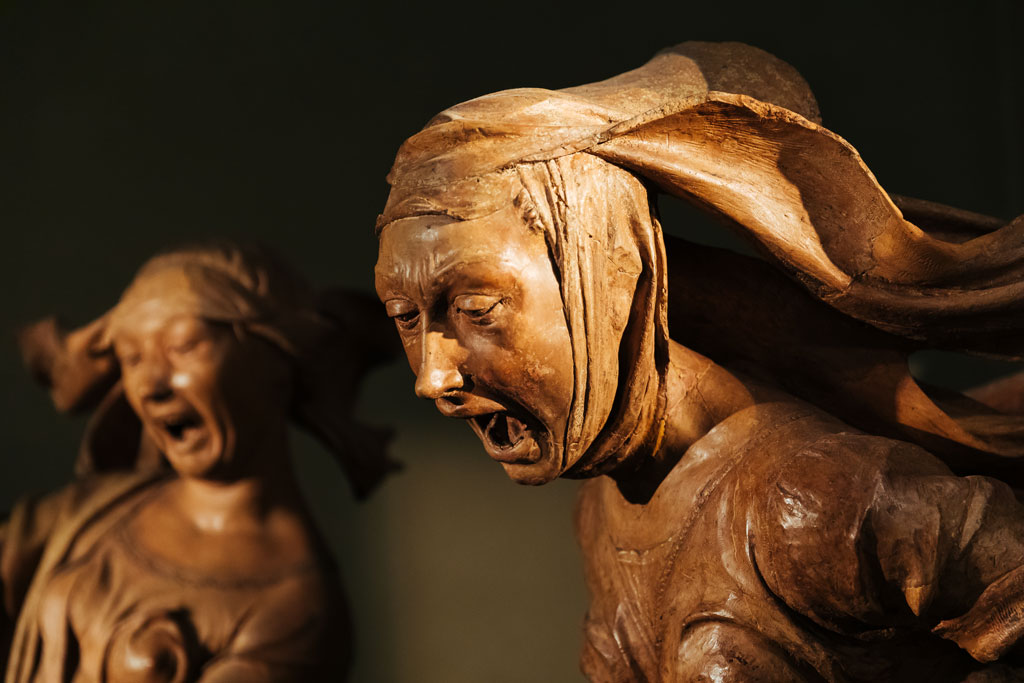
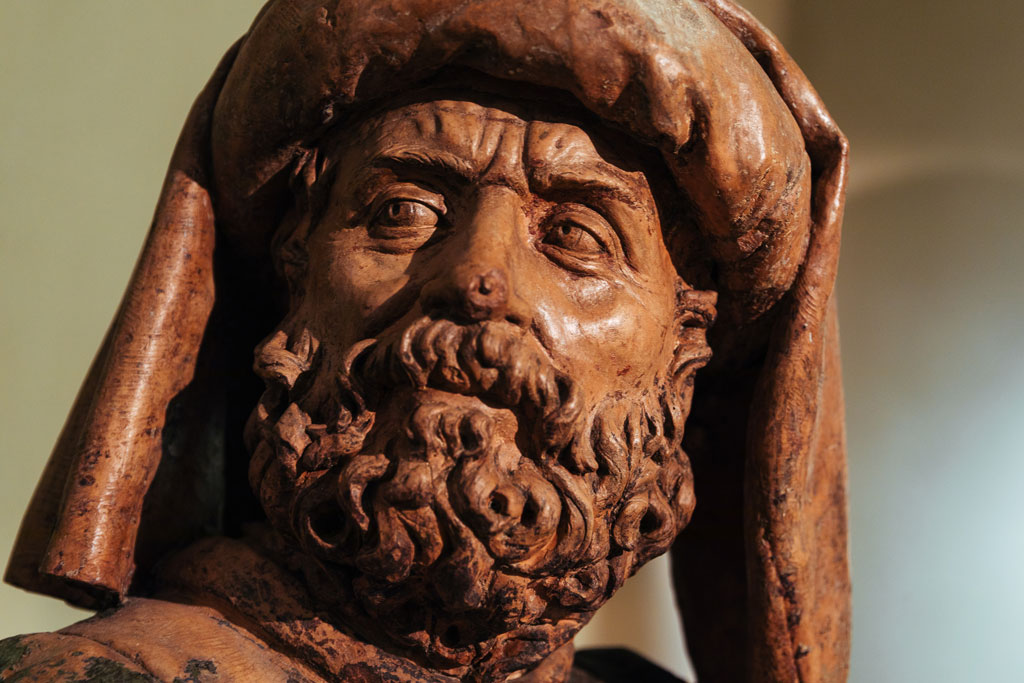
L’Oratorio di Santa Maria della Vita, gioiello del barocco bolognese, è unico in città per il soffitto alla veneziana. Edificato nel Quattrocento per la Confraternita dei Battuti, fu ricostruito tra il 1604 e il 1617 da Bonifacio Socchi su progetto di Floriano Ambrosiani, con decorazioni in stucchi preziosi completate nel 1639. Conserva due capolavori storici: il gruppo in terracotta di Alfonso Lombardi, il Transito della Vergine (1519-1522), e la pala d’altare Madonna col Bambino e Santi di Giovanni Francesco Bezzi, detto il Nosadella (1564).
La decorazione iconografica intreccia il culto mariano alla devozione per il Beato Raniero. La volta presenta tre grandi tele dedicate alla Madonna, con al centro l’Incoronazione della Vergine (1628 ca.), attribuita a Menghino del Brizio. Sulle pareti laterali, le statue dei santi protettori di Bologna, realizzate da Alessandro Algardi, arricchiscono lo spazio, mentre il pavimento in battuto alla veneziana, rifatto nel Settecento, richiama l’eleganza dei marmi.
Oggi l’Oratorio è protagonista di un nuovo allestimento che valorizza il Transito della Vergine con un suggestivo percorso che consente di osservare i dettagli emotivi delle sculture di Lombardi. Inoltre, gli spazi espositivi accolgono ora una collezione permanente di opere provenienti dalle Collezioni d’Arte e di Storia della Fondazione Carisbo, tra cui la Sibilla Samia di Guercino, Porzia che si ferisce alla gamba di Elisabetta Sirani.
Infine, una sala multimediale offre un racconto coinvolgente sulla storia del complesso e sul pensiero artistico di Niccolò dell’Arca, creando un dialogo vivo tra passato e presente.
Via Clavature 8, Bologna
lunedì - domenica
10:00-18:30 (ultimo ingresso ore 18:00)
+39 055 29 89 818 (call center per info e prenotazioni)
+39 051 19936385 (reception)
Fermata Rizzoli 11 A-B-C, 13, 14 A-B-C, 19, 25, 29, 30.
Fermata Archiginnasio NAVETTA A (da Parcheggio Tanari).
Biglietto intero | € 8
Biglietto ridotto | € 5
Gruppi di min 15 pax
Biglietto di un’altra sede Genus Bononiae
Giovani dai 6 ai 18 anni
Studenti universitari con tesserino (fino 26 anni)
Residenti – solo Oratorio
Card Cultura – solo Oratorio
App Giubileo – solo Oratorio
Biglietto ridotto gruppi scolastici | € 4
Gruppi scolastici (+ € 1 di prevendita)
Biglietto gratuito
Bambini fino a 5 anni
Visitatore con disabilità
Guida turistica con tesserino
Accompagnatore di gruppi (1 per gruppo)
Forze dell’ordine
Membership Card Genus Bononiae
Residenti con documento – Solo Compianto e per visite autonome (no gruppo)
Giornalisti con tesserino - previa richiesta di accredito da parte della Redazione a stampa.comunicazione@genusbononiae.it
Membri permanenti di ordini religiosi
Soci ICOM
Card Cultura – Solo Compianto
Bologna Welcome Card
App Giubileo – solo Compianto
Diritti di prenotazione e prevendita: tariffe gruppi e singoli €1 per persona
Con il biglietto d’ingresso viene consegnata una card che permette di scaricare sul proprio smartphone l’audioguida, dedicata al Compianto e al luogo che lo ospita, disponibile in 4 lingue (italiano, inglese, spagnolo e francese). Si consiglia di portare con sé le proprie cuffiette.
Non sono al momento previsti eventi in questa sede.
Costruito nel XIII secolo, il Complesso di Santa Maria della Vita era originariamente costituito dall’Ospedale e dalla Chiesa, la cui costruzione fu voluta da Riniero Barcobini Fasani, un perugino che nel 1260 abbandonò la sua città con alcuni seguaci per dirigersi a Bologna, ispirato alla missione dalla Vergine Maria. Giunto in città con ventimila persone al seguito, nel 1261 fondò la Confraternita dei Battuti Bianchi, facendo erigere un luogo per la cura e l’assistenza di infermi e pellegrini.
Nacquero così l’Ospedale, la Chiesa e la Confraternita dedicate a Santa Maria della Vita, nel corso dei secoli divenuti importante luogo di cura e grandioso Santuario, arricchiti di splendide opere d’arte, a partire dalla cupola della chiesa disegnata dal Bibiena, uno degli esempi più alti di Barocco bolognese, e il magnifico Compianto sul Cristo Morto di Niccolò dall’Arca, realizzato tra il 1463 e il 1490, “urlo di pietra”, secondo la celeberrima definizione di D’Annunzio, che tanto ha influenzato la storia della cultura italiana. Notevole anche il Transito della Vergine di Alfonso Lombardi, ospitato nell’adiacente Oratorio, ispirato a un drammatico episodio tratto dalla Leggenda Aurea di Jacopo da Varagine e dai vangeli apocrifi: 15 statue in terracotta a grandezza leggermente superiore al naturale, ospitate in alto all’interno di una nicchia, che narrano il tentativo di profanazione del corpo della Vergine, durante i suoi funerali, da parte di un sacerdote ebreo, fermato dall’apparizione di un angelo armato di spada.
Con le riforme napoleoniche del 1796-‘97, i beni della Confraternita vengono espropriati e diventano pubblici. A partire dal 1801 nel Grande Ospedale della Vita e della Morte confluiscono anche altri ospedali bolognesi, fino al 1814, anno in cui il complesso assume la nuova denominazione di Ospedale Maggiore, poi raso al suolo dai bombardamenti del 1943 e ricostruito altrove. Nel 2006 il complesso viene affidato alla gestione della Fondazione Cassa di Risparmio in Bologna, e dopo un attento restauro riaperto al pubblico nel maggio del 2010. Il Santuario e le sue pertinenze costituiscono il cuore del centro storico di Bologna, il cosiddetto Quadrilatero.
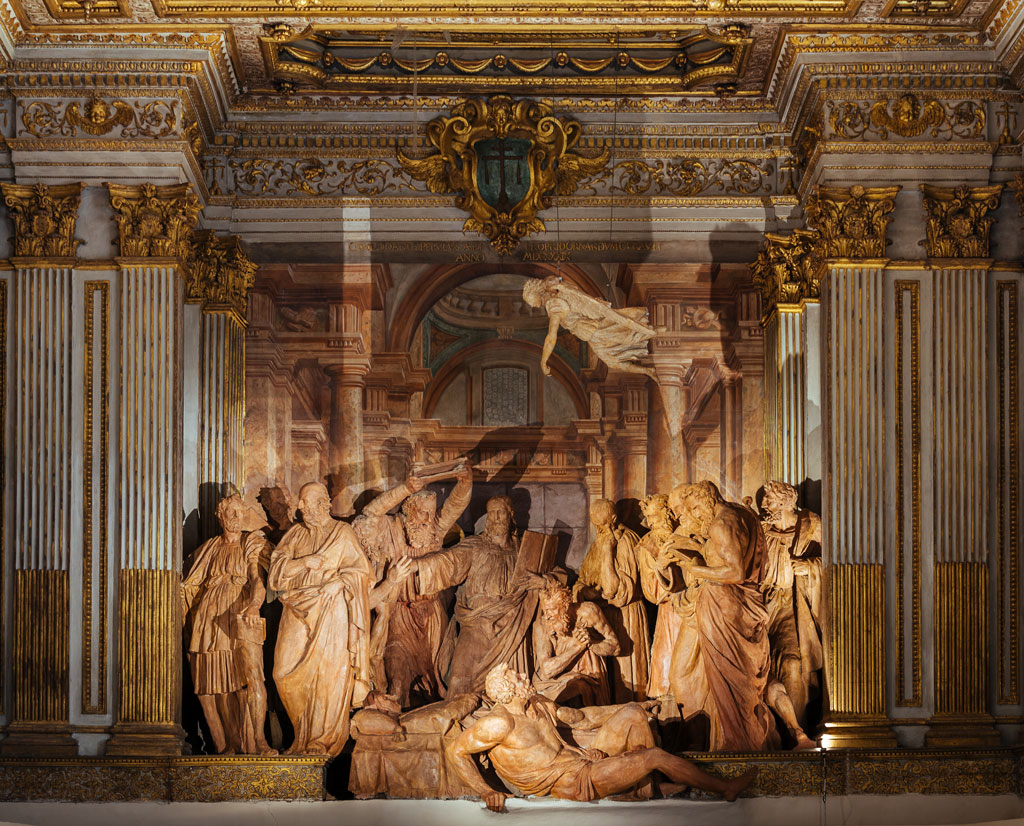
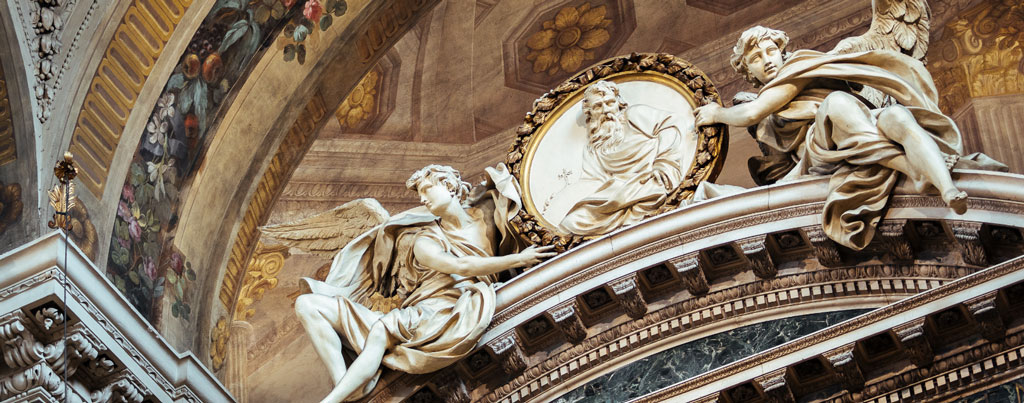
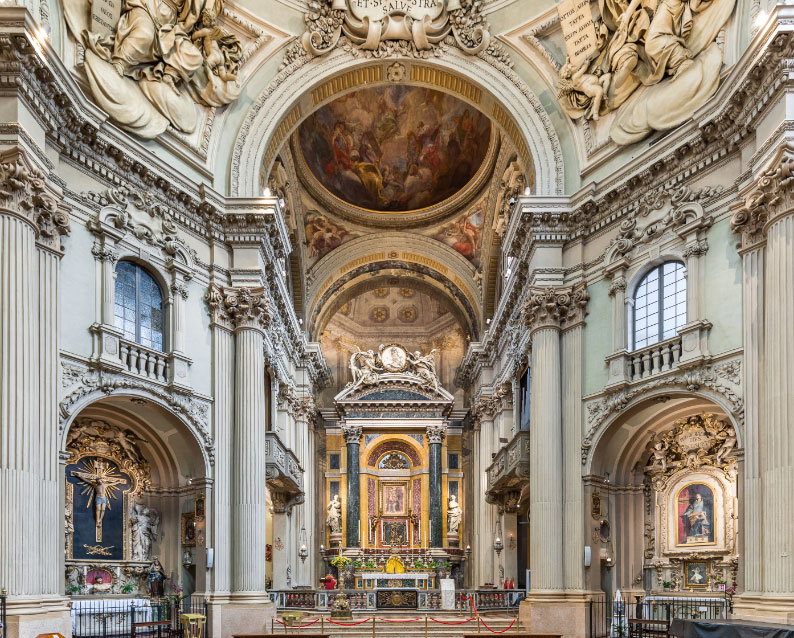
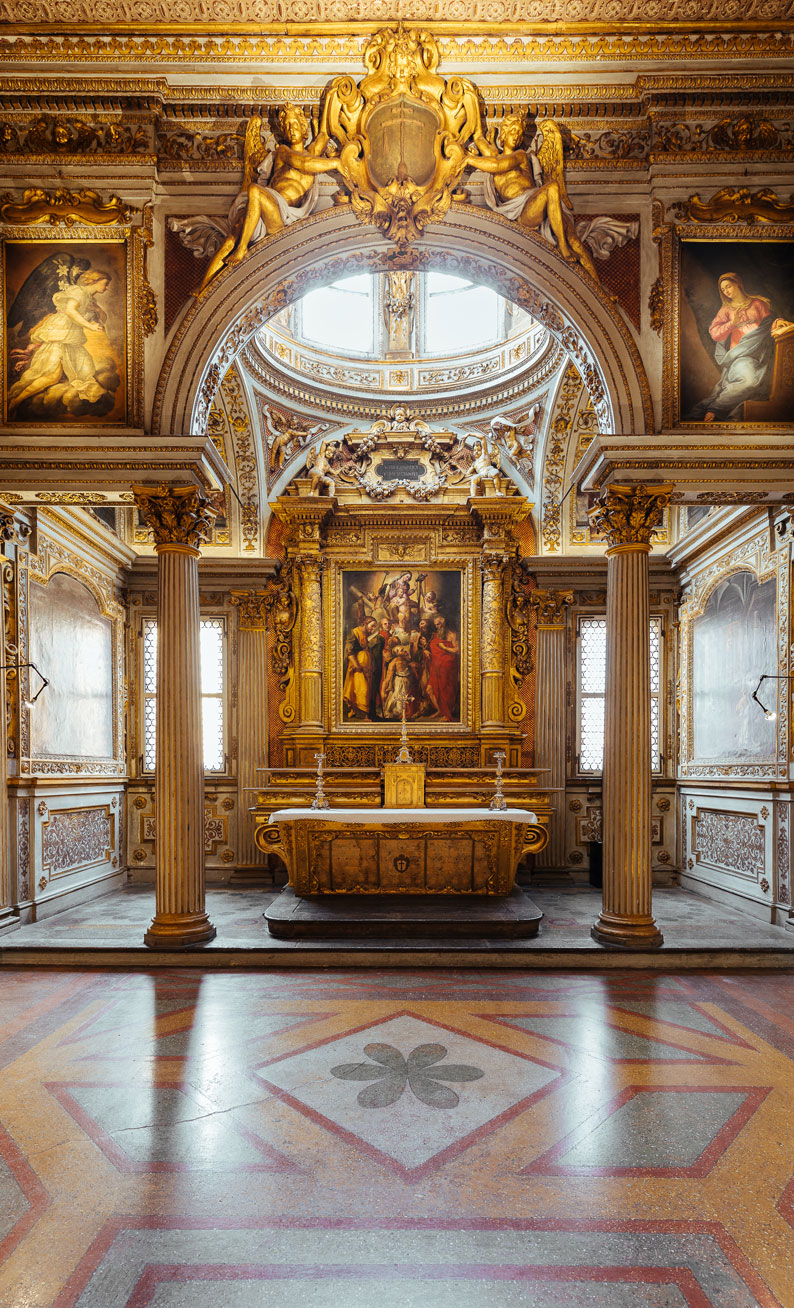
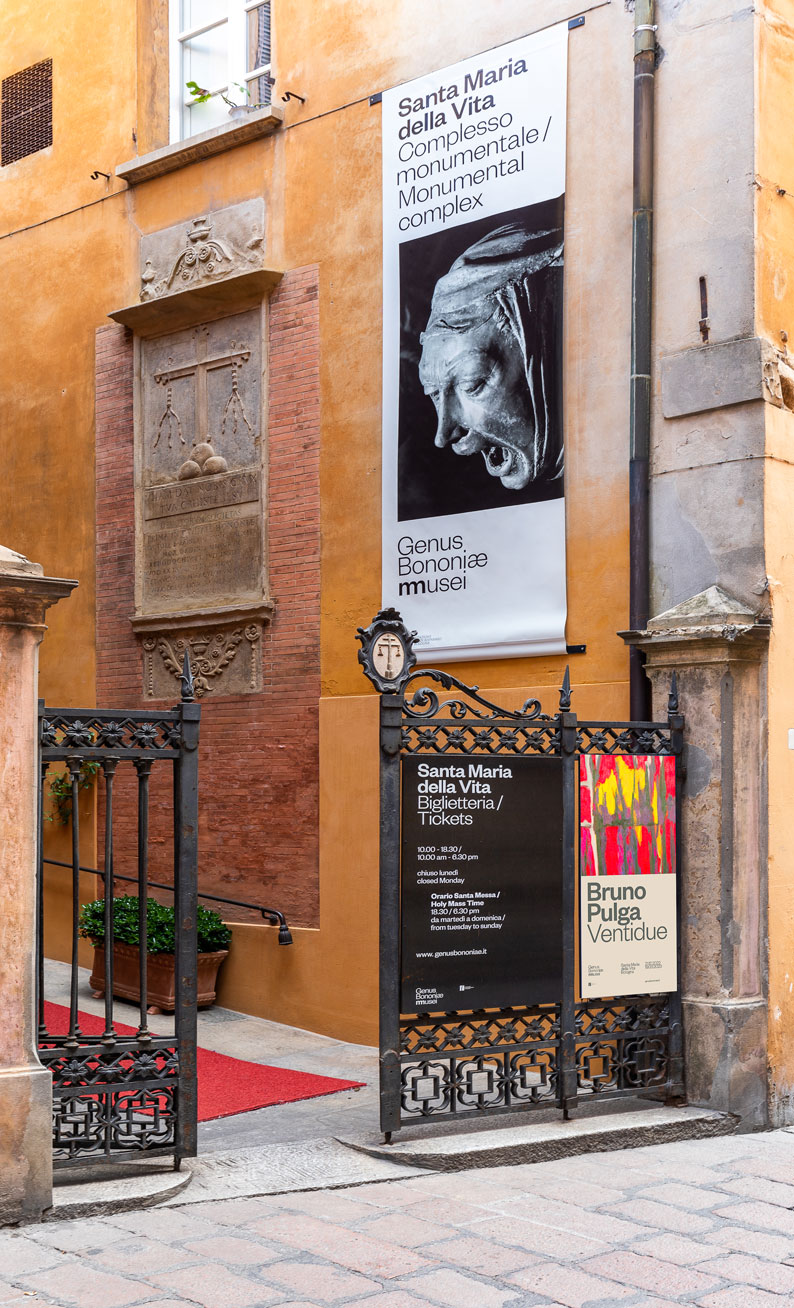

Scopri tutte le sedi >
Iscriviti
alla nostra
newsletter!
